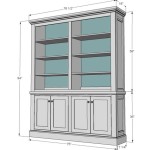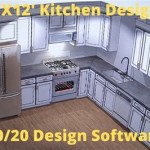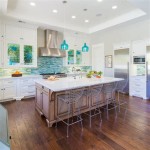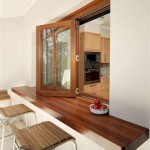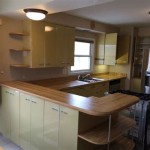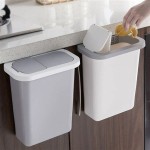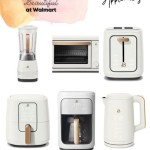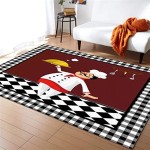How To Mix Knobs and Pulls on Kitchen Cabinets: A Comprehensive Guide
Selecting hardware for kitchen cabinets often involves choosing between knobs, pulls, or a combination of both. While a uniform approach offers a streamlined aesthetic, strategically mixing knobs and pulls can introduce visual interest and enhance functionality. This article provides a comprehensive guide on how to effectively combine knobs and pulls on kitchen cabinets, covering design principles, practical considerations, and specific placement strategies.
Understanding the Functionality of Knobs and Pulls
Before embarking on a hardware mixing project, it is essential to understand the distinct functionalities of knobs and pulls. Knobs, typically smaller and more compact, are generally operated with a single point of contact. They are often suitable for lighter-use cabinets and drawers, providing a subtle and understated look. Pulls, on the other hand, are larger and operated with multiple fingers or the entire hand. Their ergonomic design allows for a more secure grip and easier opening, particularly for heavier drawers and cabinets. The choice between a knob and a pull should therefore be informed by the weight and frequency of use associated with the cabinet or drawer in question.
Consider the kitchen's layout and workflow when making hardware selections. High-traffic areas, such as those near the sink or stove, may benefit from the ease of use provided by pulls. Infrequently used cabinets, such as those storing holiday decorations or seasonal cookware, may be adequately served by knobs. Ultimately, a thoughtful balance of functionality and aesthetics is key to a successful hardware mixing strategy.
Establishing a Consistent Design Theme
Mixing knobs and pulls effectively requires establishing a cohesive design theme. Maintain consistency in terms of finish, style, and material to avoid a disjointed appearance. For instance, if opting for brushed nickel pulls, choose brushed nickel knobs to complement them. Similarly, if selecting modern, minimalist pulls, avoid pairing them with ornate or traditional knobs. The hardware should feel like a unified set, even when utilizing different shapes and sizes.
Consider the overall style of the kitchen when choosing hardware. A traditional kitchen might benefit from classic knobs and pulls with subtle detailing, while a contemporary kitchen might favor sleek, minimalist hardware. A farmhouse kitchen might incorporate rustic knobs and pulls with a slightly weathered finish. The hardware should enhance the existing design elements of the kitchen, such as the cabinet style, countertop material, and backsplash design.
Pay attention to the scale of the hardware in relation to the cabinet or drawer. Overly large pulls on small drawers can appear disproportionate, while too-small knobs on large cabinets can be difficult to grasp. Generally, pulls should be approximately one-third the width of the drawer or cabinet door. Knobs should be sized appropriately to feel substantial in the hand without overwhelming the surrounding surface.
Strategic Placement of Knobs and Pulls
The placement of knobs and pulls can significantly impact the overall look and functionality of the kitchen. A common strategy is to use pulls on drawers and knobs on cabinets. This approach provides visual distinction and aligns with the functional advantages of each hardware type. However, there are several variations on this theme that can enhance the kitchen's design.
Consider using pulls on all lower cabinets and drawers. This creates a consistent and ergonomic design at a level that is more frequently accessed. Upper cabinets can then be fitted with knobs, providing a visual contrast and a lighter feel. This strategy is particularly effective in kitchens with predominantly lower drawers and fewer upper cabinets.
For a more balanced look, consider using pulls on larger drawers (typically those wider than 18 inches) and knobs on smaller drawers and cabinets. This provides a practical solution for heavier drawers while maintaining a unified aesthetic. The transition point between knobs and pulls should be carefully considered to avoid a jarring visual effect. Aim for a gradual change that feels intentional rather than random.
Another approach is to use pulls on all drawers and knobs on all upper cabinets, except for pantry cabinets. Pantries, often containing heavier items, will benefit from pulls. The addition of pulls on all drawers allows for a more robust and easier open. The consistent use of knobs on upper cabinets provides visual distinction.
When placing pulls on drawers, consider the drawer style. For slab-front drawers, center the pull horizontally. For drawers with a recessed panel, the pull can be centered on the panel itself. For Shaker-style drawers, position the pull slightly above the center of the top rail. The exact placement should be determined based on visual appeal and ease of use.
When placing knobs on cabinets, position them on the stile opposite the hinges. This ensures that the cabinet door opens smoothly and that the knob is easily accessible. The knob should be placed in a consistent location on all cabinet doors to maintain a uniform appearance.
Addressing Practical Considerations
Beyond aesthetics, practical considerations play a crucial role in hardware selection and placement. Consider the material and finish of the hardware in relation to the kitchen's environment. High-moisture areas, such as near the sink, may require hardware made from corrosion-resistant materials, such as stainless steel or brass. The finish should also be durable and easy to clean, as kitchen hardware is subject to frequent handling and exposure to food and liquids.
Consider the ergonomics of the hardware. Pulls should be sized and shaped to fit comfortably in the hand. Knobs should be large enough to grasp easily but not so large as to be cumbersome. Test out different hardware options to ensure that they are comfortable to use and that they do not create any strain or discomfort.
Think about the potential for hardware to snag clothing or jewelry. Avoid pulls with sharp edges or protruding elements that could catch on clothing. Knobs should be smooth and rounded to minimize the risk of injury. Consider the movements typically performed in the kitchen and choose hardware that will not interfere with those movements.
Accessibility is also an important consideration, particularly for individuals with limited mobility or dexterity. Choose hardware that is easy to grip and operate, even with wet or slippery hands. Lever-style pulls can be particularly helpful for individuals with arthritis or other conditions that affect hand strength.
Before committing to a particular hardware combination, consider purchasing a few samples and installing them on a test door or drawer. This allows for a realistic assessment of the hardware's appearance, feel, and functionality. It also provides an opportunity to experiment with different placement options and to ensure that the hardware complements the overall design of the kitchen.
Integrating Hardware with Other Design Elements
The choice of knobs and pulls should not be made in isolation. Consider how the hardware will integrate with other design elements in the kitchen, such as the faucet, lighting fixtures, and appliances. Choose hardware that complements the overall style and finish of these elements to create a cohesive and harmonious design.
If the kitchen features stainless steel appliances, consider using stainless steel or brushed nickel hardware. If the kitchen features oil-rubbed bronze lighting fixtures, consider using oil-rubbed bronze or antique brass hardware. The goal is to create a sense of visual continuity and to ensure that the hardware does not clash with other elements in the space.
Consider the backsplash material and color when choosing hardware. A simple, neutral backsplash may allow for more flexibility in hardware selection, while a bold or patterned backsplash may require more subdued hardware to avoid visual overload. The hardware should enhance the backsplash without competing with it.
Consider the countertop material and color when choosing hardware. A dark countertop may pair well with light-colored hardware, while a light countertop may pair well with dark-colored hardware. The contrast between the hardware and the countertop can add visual interest and dimension to the kitchen.
Finally, consider the overall lighting in the kitchen when choosing hardware. The hardware should reflect light in a way that enhances the space and creates a warm and inviting atmosphere. Polished finishes can add a touch of glamour, while matte finishes can create a more subtle and understated look. The goal is to choose hardware that looks beautiful and functional under both natural and artificial light.

How To Mix And Match Your Kitchen Cabinet Hardware

Top Tips For Mixing And Matching Kitchen Cabinet Hardware

How To Mix Match Kitchen Hardware Finishes Styles The Inspired Room

How To Mix And Match Cabinet Hardware Sprucing Up Mamahood

How To Mix Cabinet Hardware Mockett

How To Mix Match Kitchen Hardware Finishes Styles The Inspired Room

How To Create A Custom Looking Kitchen Mixing Hardware Styles

3 Quick Tips For Mixing Knobs Pulls On Kitchen Cabinets

How To Mix Kitchen Cabinet Hardware Knobs And Pulls Porch Daydreamer

Mixing Cabinet Hardware In Kitchen Google Search Cabinets Pulls
Related Posts

